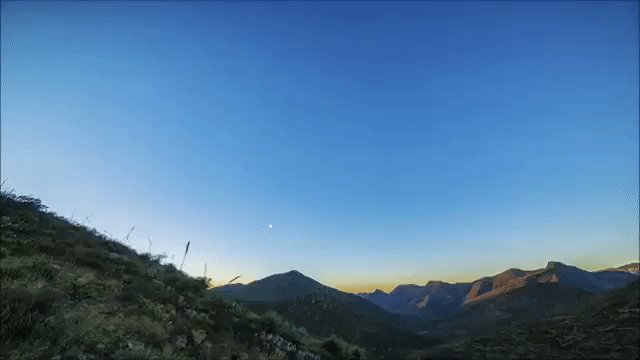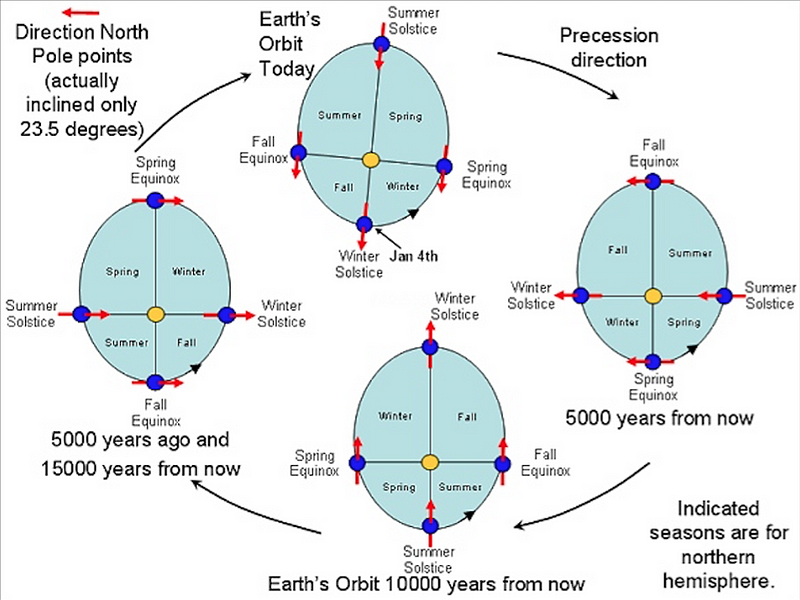8 Scientific Facts Everyone Should Know About Leap Day

It isn’t just a day that comes every four years; it’s everything we need to keep our calendar aligned with Earth’s orbit.
Once every four years, at least under most circumstances, humanity inserts an extra day into our calendar year to help keep time: Leap Day. February 29 is a date that only rarely graces our lives, but plays an enormously important role: to keep our annual calendar and the passing of the seasons aligned over very long timescales. Despite a bizarre historical origin and a series of urban legends surrounding it, Leap Day exists for scientific, not superstitious, reasons.
Without a Leap Day, the physics of planet Earth would quickly cause the seasons to move out-of-phase with our annual calendar, and the equinoxes and solstices would drift around the days, months and seasons. In fact, if we did Leap Day every four years without fail, things wouldn’t line up very well, either. Only if we properly account for our planet’s axial rotation and revolution around the Sun can we keep our calendar correct, and that’s what Leap Day is all about. Here are eight scientific facts everyone should know.

1.) There are not really 24 hours in every day. The Earth’s motion has two basic parts: our rotational motion around our axis and our revolutionary motion around the Sun. Typically, we think about our rotation as lasting 24 hours, which is why a day is 24 hours, and our revolution as requiring 365 days, which is why a year is 365 days long.
Only, these effects are inseparable, as both motions are always occurring. If Earth were totally stationary, remaining in the same position, then a full rotation through all 360° would equate to a day. But that full 360° rotation isn’t a day: it’s slightly less by two metrics. First, it only takes the Earth 23 hours, 56 minutes and 4 seconds to rotate through 360°. But secondly, because the Earth moves through space in its orbit around the Sun, it has to rotate a little bit extra to position the Sun in the same relative location as it was in the previous day. That extra bit of required motion is what makes days, on average, 24 hours.

2.) Some days are actually longer than others. Have you ever wondered why the earliest sunrise and latest sunset don’t occur on the summer solstice, and why the latest sunrise and earliest sunset don’t line up with the winter solstice? It’s because the Earth orbits the Sun in an ellipse, which means when the Earth is closest to the Sun (perihelion) it moves at its fastest, and when it’s farthest from the Sun (aphelion), it moves most slowly.
Combine that with the fact that perihelion/aphelion doesn’t line up with either the solstices or equinoxes, and you’ll find that some days have less than 24 hours while others have more. The 24 hour day that we’re used to is just an average of all the days throughout the year, and even at that, they don’t line up perfectly.

3.) The Earth completing one revolution around the Sun doesn’t add up to a calendar year. In astronomy, as in mathematics, a complete revolution is defined as when the Earth returns to the same position it occupied in space a full 360° orbit ago. In astronomy, this is what we call a sidereal (sigh-DEER-ee-ul) year, or the amount of time it takes the Earth to return to the same relative position it occupied earlier with respect to the Sun.
But a sidereal year is not the same as a calendar (also known as a tropical) year. The Earth rotates on its axis while it revolves around the Sun, and that axis precesses over time, which means that the Earth is oriented slightly differently with respect to the Sun when it completes one astronomical revolution versus the year prior. The difference between a sidereal and a tropical year is small only about 20 minutes but that means a calendar year, which is what you need to make the seasons line up, is actually 20 minutes shorter than a full revolution around the Sun.

4.) The combined effects of Earth’s axial rotation, orbital revolution, and precession give an uneven number of days in the year. Now we’re getting to the fun stuff. If you do the math to the best of our knowledge, you wind up figuring out that there are 365.242188931 days in a true calendar year. This is not an even number. If we had 365 days in a year each year, each passing century would throw our calendar out of whack by almost a full month.
If we put a single Leap Day every four years, we’d account for 365.25 days on an annual basis, which is very close but not quite right. In fact, this is what the old Julian Calendar, which we followed for ~1,600 years, did to account for the years. By the late 1500s, this difference was so apparent (our calendar was off by about 10 too many days), that the calendar needed to be revised.
In Italy, Poland, Spain, and Portugal, the dates October 5 through 14, in 1582, never existed. Other countries skipped those 10 days at a later date; Isaac Newton was born on Christmas Day in England only because they hadn’t skipped those dates by 1642. Elsewhere in the world, Newton was born in January 4, 1643.

5.) The Gregorian calendar accounts for Leap Days extraordinarily well. The way we make up for the mismatch of our calendar year with the demands of Earth’s combined motions is brilliant and relatively simple:
- every year that is divisible by 4 is a leap year,
- unless it’s also divisible by 100 but not 400, in which case it’s not a leap year.
This means that 2004, 2008, 2012, 2016, 2020, etc., will all be leap years, because they’re all divisible by 4. But if your year marks the turn-of-the-century, it’s only a leap year if it’s also divisible by 400. The year 2000 was a leap year, but 1900 wasn’t and 2100 won’t be. All told, the adoption of the Gregorian calendar gives us 365.2425 days in a year, which means we won’t be off by even a single day until more than 3,200 years have gone by, at which time we might want to skip another Leap Day down the road.
If we excluded every year that’s divisible by 3200 from having a Leap Day, we wouldn’t be off by a single day until ~700,000 years passed.

6.) Over the long term, we’ll need to change our calendar yet again. If everything were constant — our rotation rate, our axial tilt’s orientation, and our orbital motion around the Sun — this calendar would be practically perfect, but only for now. Every time there’s an earthquake, our rotation rate slightly speeds up, but that effect is swamped by the gravitational effects of the Sun and Moon on the Earth, which slow us down.
The slow-down effect is known as tidal braking, and clocks in at an average of 14 microseconds per year. That might seem negligible, but over time, it really adds up. If we examine the daily patterns that the tides imprinted on our soil from long ago, known as tidal rhythmites, we can calculate what Earth’s rotation rate used to be. 620 million years ago, just before the Cambrian explosion, our day was a little under 22 hours long, which means that back when Earth first formed, our day was only 6-to-8 hours long. The lengthening days mean that, as time goes on, we’ll need fewer and fewer days to complete a tropical year.

7.) In four million years, Leap Days will be unnecessary. This extraordinarily slow effect of tidal braking will start to become important as the millennia continue to tick by. While right now, we’re only adding a single leap second every 18 months or so to accommodate it, the day continues to lengthen. After another 4 million years go by on Earth, the day will lengthen by another 56 seconds: the exact amount necessary for a tropical year to require exactly 365 days.
At that point approaches, we’ll want to first reduce the number of Leap Days and later get rid of them altogether, as they’ll become completely unnecessary. If humans are still around and keeping calendars at that point, we’ll want to think about further transitions, as we’re going to need to begin skipping days (in a reverse-Leap Day scenario) in order to keep our seasons aligned with our calendar.

8.) The ultimate fate of the Earth-Moon system will be wildly different from what we experience today. As the effect of tidal braking continues, not only will Earth’s rotation slow down, but the Moon will slowly spiral away from the Earth. In a few hundred million (but less than one billion) years, the Moon will be so distant from Earth that there will no longer be any total solar eclipses; they will all be annular instead.
Assuming we survive the Sun’s transformation into a red giant and planetary nebula/white dwarf combination, a day on Earth and the Moon’s orbital period will both lengthen until they match: until they both take about 47 of our modern days, which will occur ~50 billion years in the future. Instead of the same face of the Moon always pointing towards the spinning Earth, the Moon and Earth will be mutually locked, just as Pluto and Charon are with one another today.

We should all appreciate the need for Leap Days; without them, the Earth’s seasons, equinoxes, and solstices would all shift over time, rather than falling on the same date year after year. But, simultaneously, we should also appreciate that the length of a day is not constant, just as the number of days in a year is not constant. As time goes on and the Earth’s rotation continues to slow, we’ll need fewer and fewer days to make up a full calendar year, which will mean we’ll require a constantly changing calendar system.
But for now, particularly on the scale of a human lifetime, the Gregorian calendar — where Leap Days occur every 4 years but not on centuries that aren’t also divisible by 400 year intervals — will do just fine. Enjoy your extra day this year however you see fit, and remember that without these Leap Days, our calendar simply wouldn’t add up.
Ethan Siegel is the author of Beyond the Galaxy and Treknology. You can pre-order his third book, currently in development: the Encyclopaedia Cosmologica.





